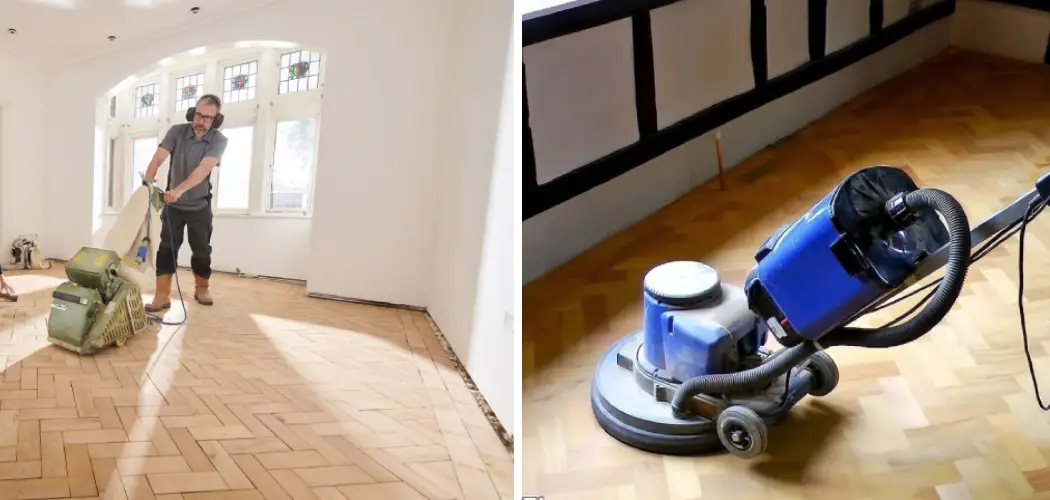Parquet floors are often chosen for their unique look and style. However, over time they can become worn down or scratched. Sanding your parquet floor can help restore its original beauty and elegance. With careful preparation and the right supplies, you can sand your parquet floor like a pro and achieve beautiful results.
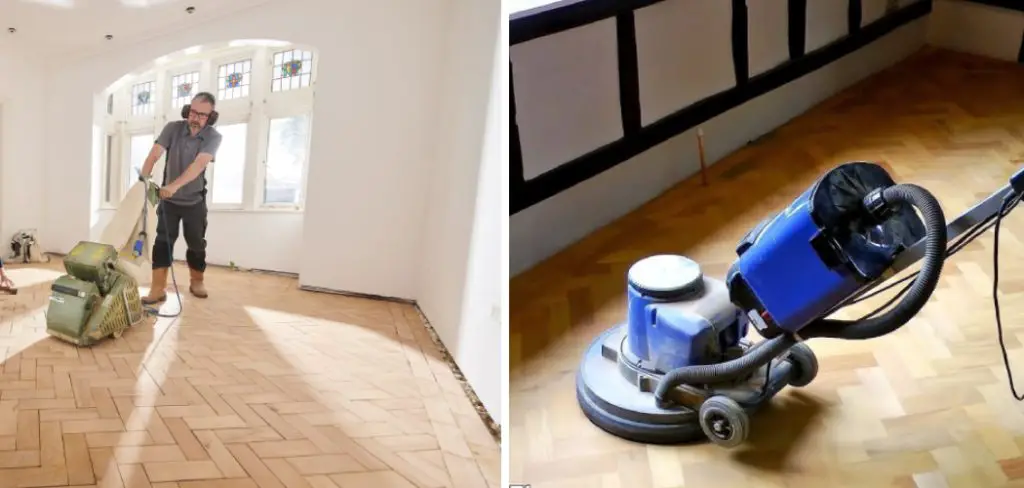
One of the main advantages of learning to sand parquet floors is that it can help to improve the overall look and feel of your home. Parquet floors usually come in various designs and patterns, sure to give your home a more appealing aesthetic. By sanding your parquet floor, you can remove any scuffs, scratches, and any dirt or dust that has built up on the surface over time. In this blog post, You will learn in detail how to sand parquet floors.
Step-by-Step Processes for How to Sand Parquet Floors
Step 1: Inspect Your Parquet Floor
Before you begin sanding, inspect the floor for any nails or screws that have come loose. Make sure to remove these before beginning the sanding process. This will prevent the floor from being scratched or damaged during sanding.
Step 2: Clean the Parquet Floor
Remove any dirt, dust, and debris from the parquet floor by vacuuming. Use a soft brush attachment for the best results. After cleaning, inspect the floor to assess any damage or wear that needs to be addressed before you start sanding.
Step 3: Sand with Coarse-Grit Paper
Start by using coarse-grit sandpaper with an orbital sander to remove any old wax, dirt, and debris from the floor. Be sure to go in one direction rather than back and forth. After completing your pass with the coarse-grit paper, switch to medium-grit sandpaper. Again, make sure to go in one direction rather than back and forth.
Step 4: Sand with Fine-Grit Paper
Once you have finished the pass with the medium-grit paper, switch to fine-grit sandpaper. This will take off any remaining finish on the floor and smooth out scratches and imperfections. After sanding, vacuum the floor to remove any remaining dust and debris before applying a new finish.
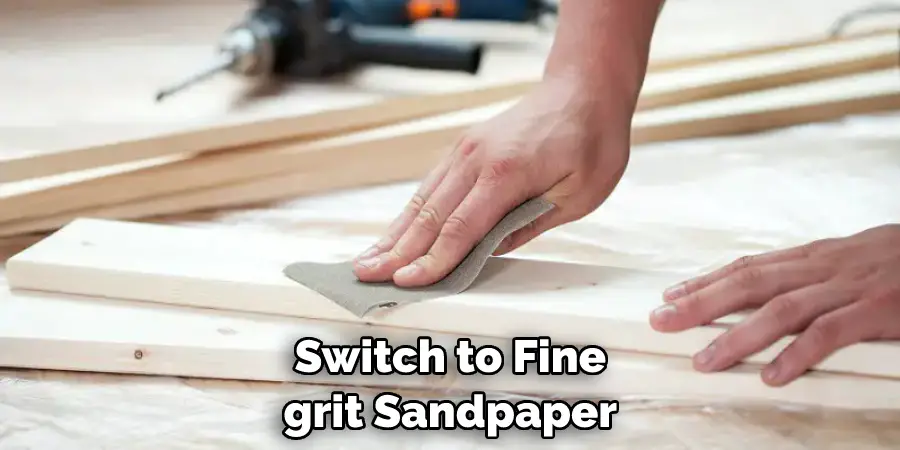
Step 5: Fill Any Cracks or Holes in the Floor
If you notice any deep cracks or holes in the parquet floor before beginning your project, fill them with wood filler and allow it to dry completely before continuing. Once the floor is clean, smooth, and dried, you can apply a new finish, such as polyurethane or varnish. Use a brush for edges and corners and an applicator for the rest of the floor.
Step 6: Let the Finish Dry and Buff the Floor
Allow the new finish to dry completely before buffing your parquet floor with a soft cloth. This will help add shine and protect your project for years to come. Following these steps can ensure that you have a beautiful, sanded parquet floor in no time.
Safety Tips for How to Sand Parquet Floors
- Always wear protective equipment when sanding parquet floors, including a dust mask, work gloves, and safety glasses.
- Make sure the room is well-ventilated by opening windows and doors before you start sanding.
- Clear the area of any furniture or other items that may be in the way prior to beginning the project.
- Test out a small area of the parquet floor before proceeding with sanding the entire floor to ensure your technique is correct.
- Use a vacuum cleaner to suck up any dust particles that have been created by sanding and remove them from the room immediately.
- When using an electric sander, ensure it is the correct size for the parquet floor and that all safety instructions are followed.
- Cover any items in the room that you do not want to be affected by dust particles with plastic sheeting or a tarp.
- Take regular breaks while sanding to allow your body adequate rest periods from the physical exertion.
By following these safety tips, you can ensure that your parquet floor sanding project is performed with the highest level of safety and efficiency.
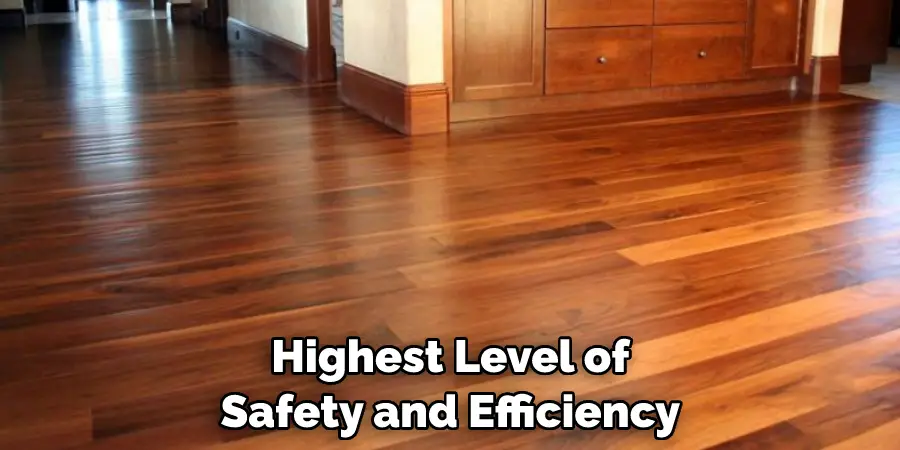
What is the Best Type of Sandpaper to Use for Parquet Floors?
When sanding parquet floors, you must use the right sandpaper type. It is important to start with a coarser grade and then progress to finer grades as you go. The best type of sandpaper for parquet floors is an aluminum oxide paper labeled “open coat” with a grit size between 40 and 60. This type of sandpaper is designed to cut quickly without clogging, so you can get the job done faster.
Start with a coarse grit of 40 or 50 and progress up to finer grades as needed. Move the sander in two directions, over each row of parquet tiles then at an angle across them. Finish with very fine sandpaper, such as 120-grit or even 220-grit. This will create a smooth surface that is ready to be sealed or stained. Be sure always to use sandpaper designed for parquet floors and not another type of material.
How Do You Clean Up the Dust and Debris After Sanding?
After sanding the parquet floor, cleaning up the dust and debris created by the process is important. To do this, use a vacuum cleaner or broom to remove all of the sawdust and other particles from the surface. You may also need a damp mop to help pick up any small pieces the vacuum may have missed. Once you have completely removed all of the dust and debris from the floor, make sure to dispose of it properly according to your local regulations.
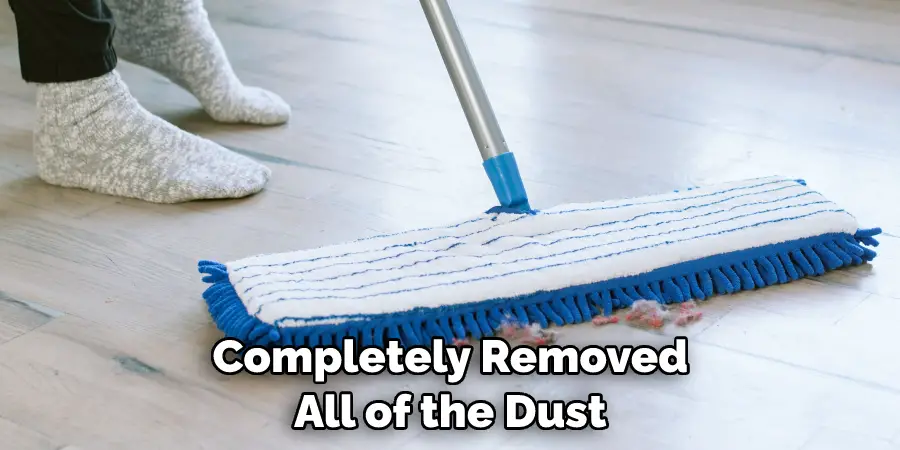
Finally, wipe down the entire surface with a damp cloth to ensure that no dust remains. Doing this will help keep your parquet floors pristine and beautiful for years. It is also important to note that the sanding process can create a lot of dust and debris, so it is best to take the necessary precautions, such as wearing protective gear and having adequate ventilation while completing this task. Doing this will help keep you safe while preserving your parquet floors.
Are There Any Special Types of Finishes That Should Be Applied to Parquet Floors After Sanding?
After sanding your parquet floors, applying a sealant or finish is important to protect the wood and maintain its beautiful look. You can use several types of finishes on parquet floors, such as polyurethane, varnish, wax, or oil-based finishes. Each type of finish will provide a different level of protection, so choosing the one that best suits your needs and preferences is important.
Polyurethane finishes are usually the most durable option and can be used on both glossy and matte floors. They provide an even surface and a good amount of wear resistance against scratches, scuffs, and stains. A varnish is also a good option for parquet floors as it offers a glossy finish and provides excellent protection against water damage. Wax or oil-based finishes offer more of a natural look and are great for giving the floor texture and shine.
How Can You Prevent Damage to the Parquet Floor During Sanding?
Sanding parquet floors can be a tricky business. It is important to take the necessary precautions and steps to ensure that your floor is not damaged while sanding. Here are some tips on how you can prevent damage to the parquet floor during sanding:
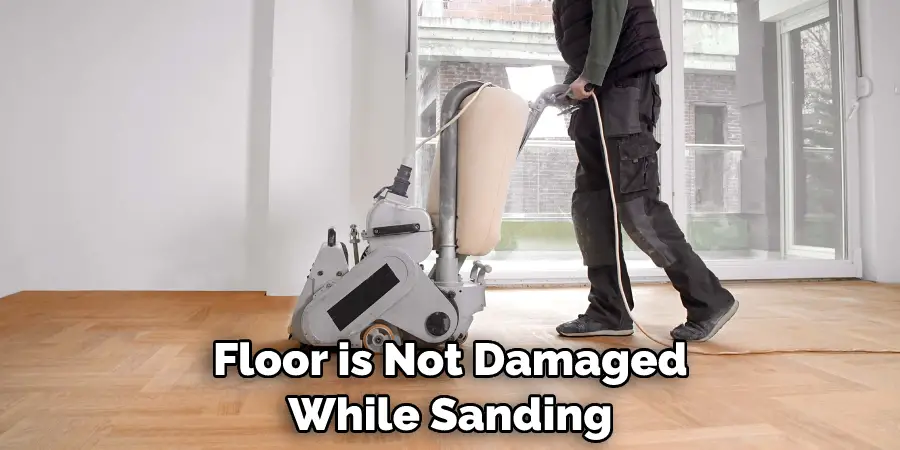
- Make sure that you use the right type of sandpaper for the job. Sandpaper that is too rough will cause scratches, so opt for medium-grit sandpaper for the best results.
- When you start sanding, work in a back-and-forth motion against the grain of the wood. This will help to create an even finish.
- Be sure to vacuum out all the dust created by sanding. This will help to prevent the dust from settling into the parquet and causing discoloration or damage.
- Always use a respirator when sanding parquet floors, as the dust can be harmful if inhaled.
- When you are done sanding, apply a sealant or varnish to the floor. This will protect it from future damage and help maintain its shine and beauty.
By following these tips, you can ensure that your parquet floor is properly sanded while also preventing any potential damage. With a little care, your parquet floor can stay beautiful for years to come.
Conclusion
One of the major disadvantages of sanding parquet floors is the dust and mess that it creates. Sanding parquet floors leaves behind a large number of fine dust particles, which can be difficult to clean up. In addition, sanding can also cause damage to the floor if not done correctly. The process requires some skill and practice in order to ensure that it is done properly and does not cause any permanent damage.
In conclusion, sanding parquet floors is not easy and requires patience, care, and the right tools. It’s important to select the correct sandpaper grit for the job, remove any old wax or sealer with a stripping agent, vacuum away any dust from sanding, use a roller applicator to apply the stain evenly, and protect your floor with a sealer or polyurethane finish.
I hope reading this post has helped you learn how to sand parquet floors. Make sure the safety precautions are carried out in the order listed.

